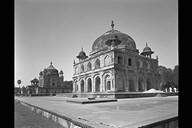Allahabad is among the largest cities in Uttar Pradesh. Hindu mythology has it that for the Prakrishta Yaina, Lord Brahma, the creator God of the Trinity, chose a land on earth, on which the three rivers would flow in to a quiet confluence. Brahma also referred to it as `Tirth Raj’ or the `king of all pilgrimage centres’. Recorded evidence also exists in the revered scriptures – the Vedas and the grand epics, the Ramayana and the Mahabharata, as also in the Puranas – of this holy place formerly called Prayag. Allahabad stands at the confluence of two of India’s holiest rivers, the Ganga and the Yamuna. Sangam, as the confluence is called, is the venue of many sacred fairs and rituals, and attracts thousands of pilgrims throughout the year. This number swells to millions during the world-famous Kumbh Mela. A third mythical Saraswati river, believed to flow underground towards the Sangam, gives the confluence its other name 'Triveni'.
Emperor Akbar founded this city in 1575 and called it by name of `Illahabas’, which has now become modern Allahabad. The monarch realized its strategic importance as a waterway landmark in North India and also built a magnificent fort on the banks of the holy Sangam.
Over the centuries that followed, Allahabad remained on the forefront of national importance - more so, during the days of the Indian independence struggle. The chequered history of Allahabad with its religious, cultural and historical ethos also gave rise to several renowned scholars, poets, writers, thinkers, statesmen and leaders.
The city being an important cantonment during the British Raj has some beautiful remnants of colonial architecture. In the early 20th century, Allahabad University was the foremost center of learning in the country.
Allahabad, today is an important city where history, culture and religion create a confluence … much like the sacred rivers that caress this God-graced land.


